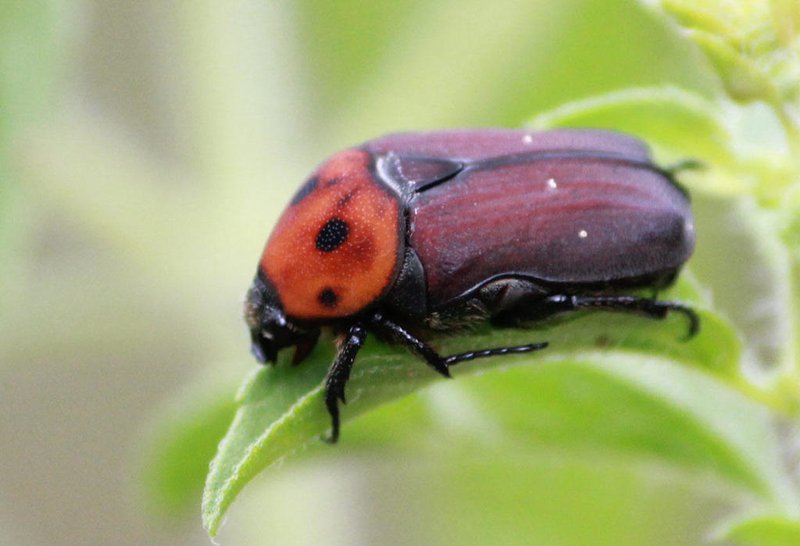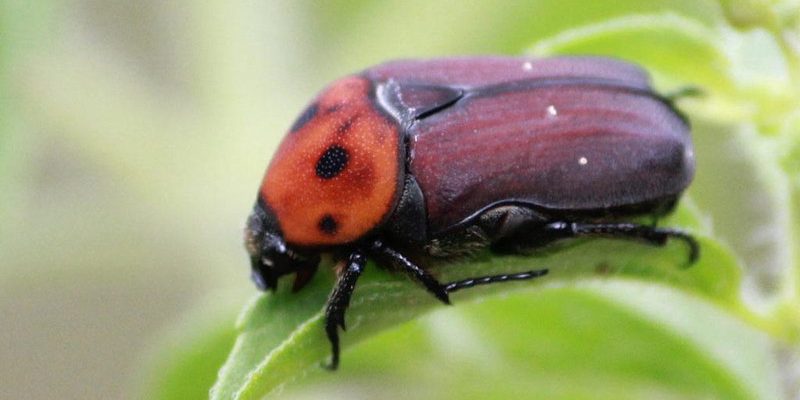
Have you ever encountered tiny bugs munching on your prized potato plants? If yes, then you’ve likely met the infamous Potato Beetle. These little critters, specifically known as the Colorado potato beetle, are notorious for their appetite and can devastate a garden in no time. They’re often bright yellow and black and resemble a small, striped soldier. While this beetle may look harmless, don’t let its color fool you—it can wreak havoc on your crops!
The potato beetle is native to North America, and it thrives in gardens, farms, and natural areas where potatoes, tomatoes, or eggplants grow. Their lifecycle plays a significant role in their impact on agriculture, making them a critical subject for anyone interested in gardening or pest control. So, let’s dig deeper into who these beetles are and how they operate.
Life Cycle of the Potato Beetle
The life cycle of the potato beetle is fascinating—and a bit alarming for gardeners. These beetles undergo complete metamorphosis, which means they transition through four distinct stages: egg, larva, pupa, and adult. Understanding each stage can help you take action before they become a more significant problem.
It all starts when a female beetle lays between 20 to 40 bright orange eggs on the undersides of potato leaves. In about a week, these eggs hatch into larvae that are small, grubs with a voracious appetite. It’s at this stage that they cause the most damage, eating through leaves and stunting plant growth. As they grow, these larvae can become quite large, and you may even spot them before realizing the extent of the damage they’ve done.
After about two to three weeks, the larvae crawl away to find a place to pupate, usually in the soil. This is where they morph into adult beetles, ready to repeat the cycle. And just like that, a small population can quickly turn into a massive infestation. Remember, each female beetle can lay hundreds of eggs, so the sooner you can spot them, the better!
Potato Beetle Habitats
Potato beetles love warm, sunny areas, which makes gardens and farms perfect homes for them. They thrive in locations where their favorite plants—like potatoes, tomatoes, and eggplants—are abundant. You might find them in backyard gardens, large potato fields, or even in the wild where these plants grow. The warmth helps them develop faster, so when the weather heats up, they come out to play.
They prefer open spaces where they have easy access to their food sources and where they can lay their eggs undisturbed. This is why you might notice them more in gardens that are not heavily monitored or in fields where crops are grown in large quantities. If you’re growing potatoes, keeping an eye out for these beetles is essential, especially during warm months!
In terms of soil, they typically don’t need anything fancy. They can thrive in various soil conditions as long as there’s enough moisture to support the plants they feed on. This adaptability makes them a real challenge for gardeners trying to protect their crops.
| Common Name | Potato Beetle |
| Scientific Name | Leptinotarsa decemlineata |
| Size | About 0.5 inches long |
| Color | Yellow with black stripes |
| Habitat | Gardens, farms, and wild areas with nightshades |
| Diet | Leaves of potato, tomato, and eggplant plants |
| Lifespan | 1 year |
Identifying Potato Beetles
To tackle the potato beetle, you first need to identify it correctly. These beetles are distinct with their bright yellow body marked by black stripes. As adults, they measure about half an inch long. You might spot them on the leaves of your potato plants, often in groups. Their larvae are also a sight to behold—small, soft, and typically reddish or orange. You may find them on the underside of leaves, where they’ll munch away to their heart’s content.
Another telltale sign of their presence is the damage they cause. You might notice holes in the leaves or entire sections chewed away. In severe cases, the plants can look almost skeletal. If you see these symptoms, it’s a good indication that potato beetles are nearby. Pay close attention to both the adults and the larvae to get a complete picture of the infestation.
Also, be on the lookout for tiny yellow eggs, usually laid in clusters on the undersides of leaves. These eggs are about the size of a pinhead and can be yellowish-orange in color. If you catch these eggs early, you can prevent the larvae from hatching and causing havoc.
Ways to Control Potato Beetle Infestations
So, what can you do if you’ve discovered these pesky potato beetles in your garden? There are several methods you can try, ranging from natural solutions to chemical controls. Start by manually removing beetles and larvae from your plants. You can wear gloves and gently shake the plants or use a small container to catch them. This method is often the quickest and easiest way to keep their numbers down.
Another effective strategy is to introduce natural predators into your garden. Birds, parasitic wasps, and certain beetles will feast on potato beetles and their larvae. Creating a friendly garden environment can help attract these helpful creatures. You could even consider companion planting; certain plants can repel potato beetles or attract their predators. For example, planting marigolds alongside your potatoes can help.
If the infestation becomes severe, you might need to resort to insecticides. However, be careful and opt for ones that are organic or least harmful to beneficial insects. Always read the labels and apply them in the early morning or late evening when pollinators are less active. Remember, controlling these beetles is about finding a balance—protecting your crops while maintaining a healthy ecosystem.
Life with Potato Beetles
Living with potato beetles in your garden can be a frustrating experience. However, it doesn’t have to be a losing battle. With attentive monitoring, early intervention, and mindful gardening practices, you can coexist with these beetles without them causing too much trouble. Think of it as a dance; sometimes you lead, and sometimes they do. The key is to stay alert and responsive to their movements.
Establishing a routine check for potato beetles can save your crops. Make it a habit to inspect your potato plants regularly. This way, you’ll catch any signs of beetles or larvae early on. Just like any pest, staying ahead of the game will ensure that your efforts yield better results.
Remember to embrace some of the organic methods we discussed. Not only are they safer for the environment, but they can also be more sustainable in the long term. By fostering a diverse garden ecosystem, you’ll not only tackle potato beetles but also promote healthier plants and a more vibrant garden overall.
FAQ
What other plants do potato beetles affect?
While the potato beetle primarily targets potato plants, it also enjoys other members of the nightshade family, including tomatoes and eggplants. If you grow any of these plants, it’s essential to monitor them closely, especially during peak beetle season.
How do I know if my potato plants are healthy despite beetles?
Even with a few potato beetles around, your plants can still be healthy. Look for signs of vigorous growth, lush green leaves, and no significant wilting or stunted growth. If you see only minor damage, your plants may still thrive. Regular care and attention can really make a difference.
Can potato beetles fly?
Yes, potato beetles can fly, which helps them spread from plant to plant. This ability makes them particularly challenging to control since they can easily move into new areas. Keeping an eye out for them early in the season can help you catch them before they spread too widely.
Are potato beetles harmful to humans or pets?
No, potato beetles are not harmful to humans or pets. They primarily feed on plants. However, they can cause significant damage to your garden, which can be disheartening for avid gardeners, so it’s best to keep their numbers in check.
Can I use homemade solutions to deter potato beetles?
Absolutely! Homemade solutions, such as a mixture of soap and water, can help deter potato beetles. Spraying this combination on your plants can repel them without using harmful chemicals. Just be sure to test it on a small section first to make sure it doesn’t harm the plants.
What time of year are potato beetles most active?
Potato beetles are primarily active during warmer months, especially in late spring and summer. The warmer temperatures help them reproduce quickly. Keeping an eye on your plants during this period can help you manage any potential infestations.
Can potato beetles survive winter?
Yes, potato beetles can survive the winter by burrowing into the soil. They remain dormant until the weather warms up again in spring. This ability to survive cold temperatures is one reason why they can be such persistent pests in gardens.
How do I encourage natural predators in my garden?
To attract natural predators like ladybugs and birds, consider planting a variety of flowers that provide nectar and pollen. Allowing some wild areas in your garden can also create a habitat for these helpful creatures. Providing water sources, such as shallow dishes, can make your garden more inviting.
Should I use chemical pesticides?
While chemical pesticides can be effective, they may also harm beneficial insects and the broader ecosystem. If you choose to use them, consider spot treating and selecting organic options to minimize collateral damage. Aim for a balanced approach that prioritizes your plants’ health and the environment.
What should I do if I find potato beetles in my garden?
If you spot potato beetles, take immediate action. Start with manual removal and check for larvae and eggs. Implement natural methods like introducing predators or using homemade deterrents. If the infestation worsens, consider organic insecticides, always following the application guidelines carefully.
Can I grow potatoes without using pesticides?
Yes, you can grow potatoes without pesticides by employing preventive measures. Using crop rotation, companion planting, and regular monitoring can help keep pests at bay. While it may require more effort, this approach leads to a healthier garden and fewer chemical inputs.
What is the best time to harvest potatoes to avoid beetles?
Harvesting potatoes earlier while the beetles are still active can help reduce damage. Aim to harvest once the plants begin to yellow and die back, but before the beetles create substantial harm. Early harvesting ensures you get a healthy yield while mitigating infestations.

